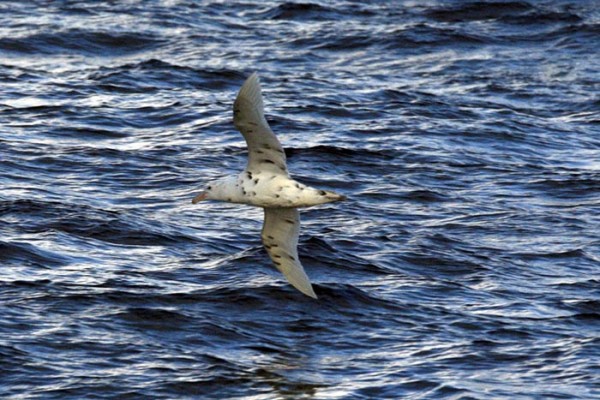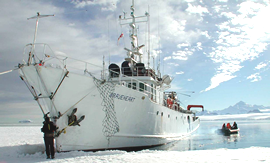The seabird team for the Great Humpback Whale Trail Expedition kept a pretty constant watch for seabirds on the run to the Kermadec. The ocean watching, lots of waves, and some great rewards. We saw birds that have been on migration to the north and eastern Pacific. Buller’s and Flesh-footed Shearwaters, Cook’s and Black Petrels returning to their Hauraki Gulf homes; the Buller’s Shearwaters by far the most numerous.

The seabird team for the Great Humpback Whale Trail Expedition kept a pretty constant watch for seabirds on the run to the Kermadec. The ocean watching, lots of waves, and some great rewards. We saw birds that have been on migration to the north and eastern Pacific. Buller’s and Flesh-footed Shearwaters, Cook’s and Black Petrels returning to their Hauraki Gulf homes; the Buller’s Shearwaters by far the most numerous.
Birds from New Zealand’s southern parts such Antipodean, Northern Royal, Buller’s and Campbell Island Albatrosses, a single Cape Petrel and Brown Skua; and then on the second day, to crown this set, a stunning white morph Giant Petrel as we cruised away from L’Esperance Rock.

As they cruised away from L’Esperance Rock, the team saw a stunning white morph Giant Petrel.
Known from early whaling days as French Rock this is the most southerly of the Kermadec Islands. As we approached this dramatic-looking craggy stack of beautifully coloured rock we sighted our first sub-tropical Kermadec birds: Kermadec Little Shearwaters (often in pairs), the diminutive Kermadec Storm-petrel, Black Noddies, and a Red-tailed Tropicbird and a Masked Booby. But all eyes were drawn to the clouds of Grey Noddies (or Grey Ternlets) above the island, milling around the cliffs where they nest, and feeding in flocks over the turbulent sea surrounding the rock.
By Chris Gaskin












